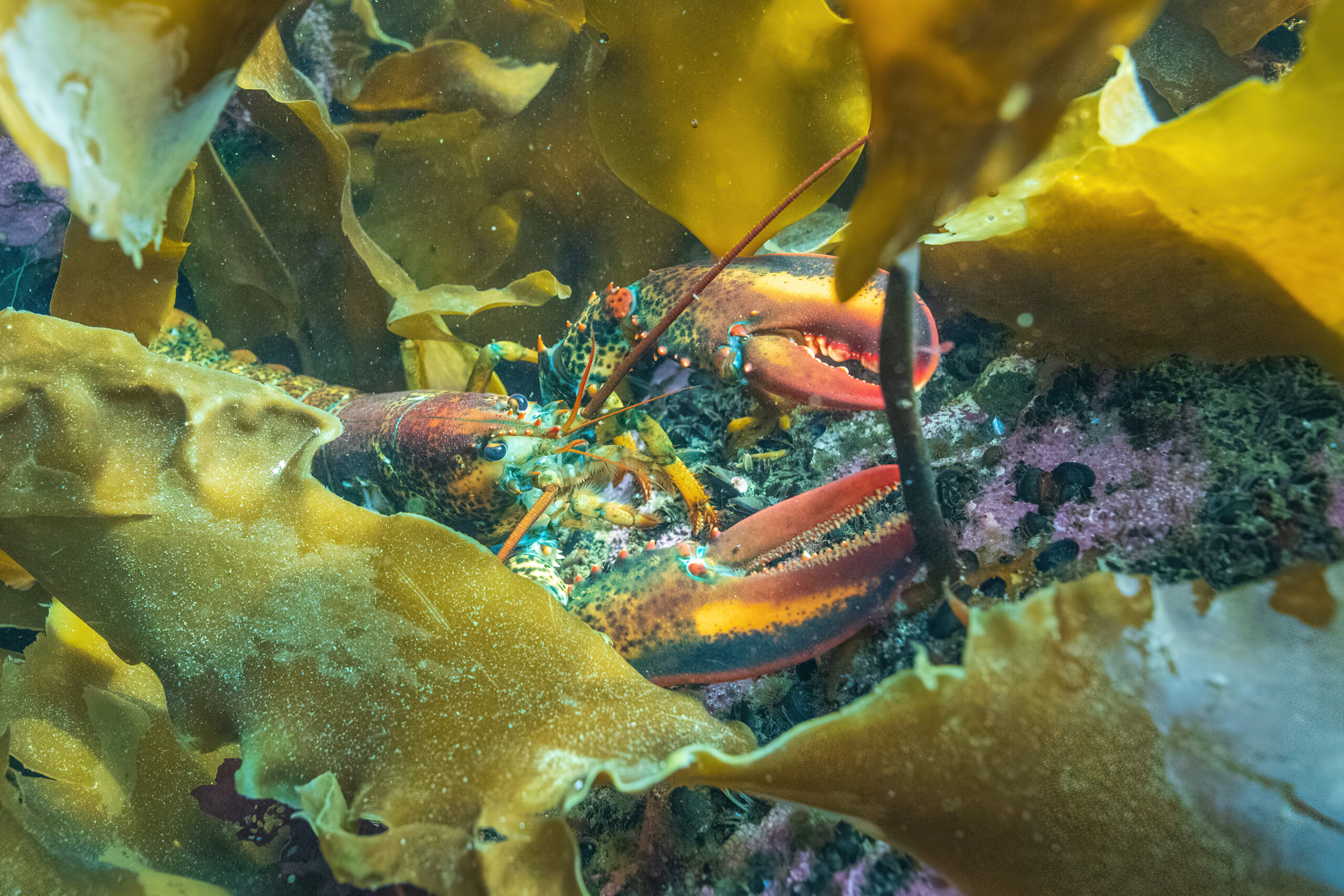
SIZE :
Approximately 25 cm for 1.7 kg.
LIFE EXPECTANCY :
At least 50 years.
LIFE CYCLE :
Reproduction takes place belly to belly. The female will keep the sperm from a single mating for two or three fertilizations. Depending on her size, she can lay thousands to tens of thousands of eggs. She keeps them beneath her tail for 9 to 12 months, until they hatch in summer. The larvae stay at the surface to feed, returning to the bottom after three to six weeks. They then measure 15 mm.
The lobster then grows by molting. It will reach its adult size in 5 to 7 years. It grows faster in warmer waters.
King of the oceans
The lobster is nicknamed the king of the oceans because it has few predators. Once adult, its shell is so hard that few species are capable of eating it.
American lobsters are reddish-brown in color, with occasional touches of yellow. There are also blue lobsters, which are rarer. Because they have poor eyesight, lobsters have two large antennae for “touching” their surroundings. Two antennules are used to detect odours. They have four pairs of walking legs and a pair of large claws: a large, heavy one for crushing, and a smaller one for cutting. This species can, therefore, be right-handed or left-handed. It has a tail under in which the female keeps the eggs.
Close to the bottom, usually less than 50 m in depth, but can go as deep as almost 500 m.
Lobsters like rocky bottoms where they can hide during the day.

Lobsters like to hide in seaweed because they don't like too much light.
Credit: Jean-Christophe Lemay, photo taken in Gaspé Bay, 2019.
PREYS :
Softshell clams
Scallops
Atlantic rock crabs
Urchins
Organic matters
Lobsters eat calcium-rich foods to help harden their shells. They are opportunists. They eat whatever is available, including carcasses. However, their favourite food is Atlantic rock crab.
PREDATORS :
Seals
MACHINES :
Trap.
REGULATIONS :
- Fishing effort.
- Limited number of permits.
- Regulated number and size of traps.
- Specific fishing season and schedule to avoid fishing during moulting.
- Maximum size: females with eggs and those measuring 11.5 cm or more (excluding tail) must be returned to the water.
- Minimum size 7.5 to 8.25 cm depending on the zone.
The Mi’gmaq had already been fishing lobster, using spears and hooks, for food or fertilizer. Commercial fishing began when lobster canning was invented in the 19th century. This made it possible to export lobster, which led to over-fishing.
The first management measures were put in place in 1873 and 1874.
More recently, fishermen in the Magdalen Islands and the “Regroupement des pêcheurs professionnels du sud de la Gaspésie (RPPSG)” have taken initiatives to conserve the resource and ensure the sustainability of their activities. In particular, the RPPSG has opened a hatchery to compensate for 3% to 5% of annual lobster catches. Today, the American lobster is doing well.
In 1977, a lobster measuring 1 m and weighing 20 kg was caught in Nova Scotia.
BENEFITS :
Lobster is a very good source of protein and phosphorus, rich in Omega-3 and minerals.
LET’S COOK :
A firm, stringy texture. A slightly sweet and salty taste, with a hint of hazelnut.
A live lobster should be kept in a bag at the bottom of the refrigerator for 24 hours, with a damp cloth. The bag should be left open so that the lobster can breathe. Cooked lobsters can also be kept in the refrigerator for 48 hours.
OUR CULINARY ADVICE :
- It is preferable to buy live lobster, ideally kept in a tank rather than on ice. Once dead, the meat will quickly be invaded by bacteria from the digestive system.
- If it is already cooked, try to unfold its tail. If it folds over, it means that the lobster it was still alive when it was cooked.
- The sound you hear when you cook a lobster is actually the sound made by the steam coming out of the shell, not the sound of the lobster itself. It has no vocal chords.
- Once cooked, plunge the lobster into iced water to stop the cooking.
- Our little extra: add a small amount of seaweeds to the cooking water.
- The shell can be kept to make lobster fumet for later use.





